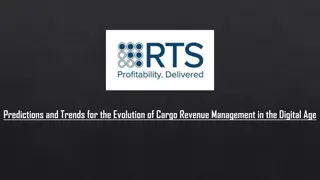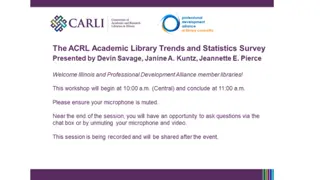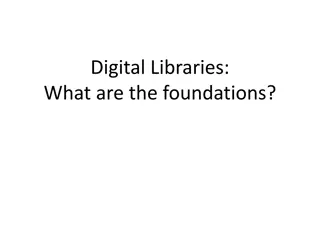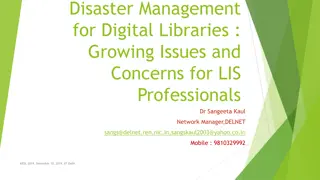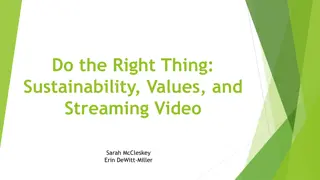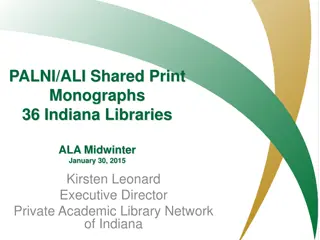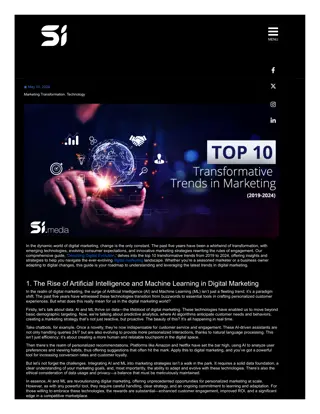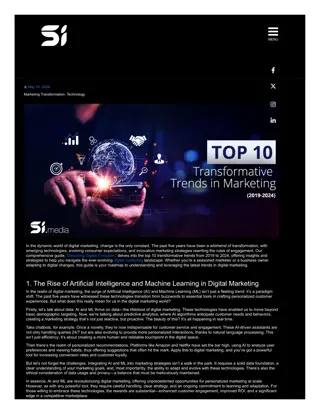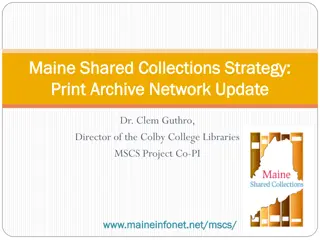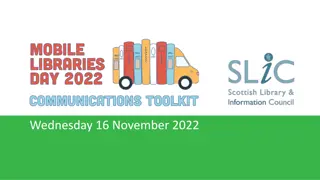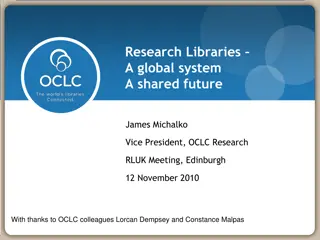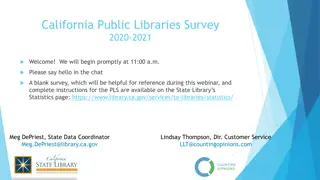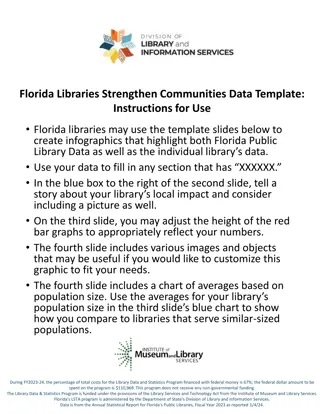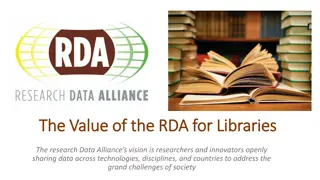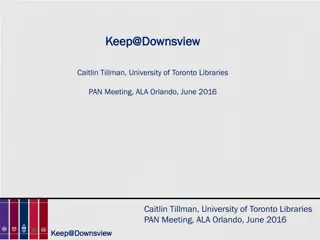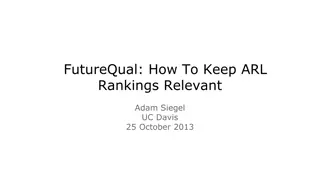Exploring Evolution of Digital Libraries: Transformative Trends in Academic Publishing
Embark on a visual journey through key milestones in academic publishing shifts as depicted in the evolution of digital libraries. Uncover insights into strategies, challenges, and advancements shaping the landscape of science and technology knowledge dissemination.
Download Presentation

Please find below an Image/Link to download the presentation.
The content on the website is provided AS IS for your information and personal use only. It may not be sold, licensed, or shared on other websites without obtaining consent from the author. Download presentation by click this link. If you encounter any issues during the download, it is possible that the publisher has removed the file from their server.
E N D
Presentation Transcript
Journey to Publisher PDA Janis Tyhurst Senior Science Subject Specialist and Business Librarian
Born Digital Library Born Digital library Invested in several major e-resource packages including e-books (Springer, T&F, Wiley, Elsevier, etc.) Library designed as open environment with lots of collaboration space Very limited amount of space allocated for book stacks Library used for major exhibitions and receptions
Joining the Scene in 2011 Building the collection ASAP Goal was to buy 10,000 titles each year Lots of titles only in print Science & Technology titles Older and OOP ST titles Demands by faculty and students for print Lots of resistance to non-print format Fixed that problem with our print buying procedures
Big Deal E-book purchasing Pros Faster process Needed 1 quote and invoice Access opened up once PO received Access opened within 1-3 days Cons Had to buy entire packages Huge investment No data on usage Requested titles in other publisher packages
Aggregator Options in 2012 Aggregators Ebsco ProQuest Dawsonera EBL
PDA/DDA aggregator models in 2012--Pluses Purchase Models Already proven to be effective Multiple publishers content available Defined trigger mechanism Set up limits on cost Set up profiles of content available
PDA/DDA aggregator models in 2012--Minuses No discounts on purchases Publishers did not release all titles to aggregators Not as many titles in Science and Technology Various restrictions Simultaneous Users Print/copy limits Issues with perpetual rights DRM
Dawsonera Had most flexible (cost effective) use model for KAUST Based on credit allotment per title, renewed annually Could have multiple SUs without purchasing additional titles Additional copies could be purchased after demonstrated need
Dawsonera Derailed License agreement was too restrictive and did not reflect reality of e- books
Necessity is the Mother of Invention Brainstorming ideas Two publishers already sold us title by title e-books Cambridge University Press Wiley Why not try PDA by Publisher?
Why Cambridge Already buying lots of individual Cambridge University Press e-titles Benefits to KAUST Lots of S&T titles All CUP S&T titles available Immediate access for academic community Reduce and streamline paperwork Admin costs reduced Easier tracking of purchases Cambridge was willing
Benefits to CUP Beta test PDA as a publisher On a small scale Limited time frame Evaluate the effectiveness of PPDA Sell more titles Ties in with CUP stated values of Delivering for our customers and authors Creativity and innovation Collaboration and openness
Points of Discussion Triggers Pricing Content Trial timeframe MARC records Licensing Discounts Service interruptions
Licensing Defined time period (6 months) Monthly invoicing Purchase trigger described Use Statistics reports Discounts to be applied Perpetual access Unlimited SUs CUP granted unlimited SUs on the titles in the PDA trial
Triggers Any title that had 2 downloads CUP unable to distinguish between freely available content and chapters at that time If CUP developed a report to distinguish between full chapter downloads and downloads of freely available content (TOC, appendices, etc.), the purchase trigger would drop down to one chapter download Download is defined by the COUNTER BR2 report standard Number of successful section requests by month and title
Content All Science and Engineering titles as of 4 February 2014 Included newly published titles (after February 2014) on a monthly basis MARC records to be provided for all new additions
Practicalities MARC records provided by CUP Received spreadsheet lists of all titles added Prior purchases All unpurchased S&T titles Monthly new title updates We asked CUP for the following MARC records modifications 740 field included an identifier for easy retrieval of all the PDA titles 856 field included our proxy address
After 3 months 1st month 10 titles purchased (Feb 2014-2 weeks only) 2nd month 51 titles purchased (March 2014) 3rd month 45 titles purchased (April 2014) We were spending lots of $$$! Obvious demand demonstrated Decided to get an estimate for the entire S&T package
Evaluation & Action We looked at the usage/purchase trends High usage PDA costs escalating Negotiated a much bigger discount to buy the entire 2014 S&T ebook package Received the larger discount on all titles purchased during the PDA trial Followed by a negotiated deal for the entire S&T package for the next 3 years, again with good discount
Advantages to Publisher PDA Best if buying lots of titles Deal directly with the publisher Access to more content Negotiate Better license terms Better discounts Streamlines purchase process
Advantages to Aggregator PDA Access to content from multiple publishers Reliable delivery platform One license to negotiate One purchase process
What is Next? Negotiating with Wiley on pilot PPDA project now Elsevier started selling title by title now Oxford University Press selling title by title now




